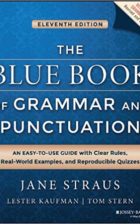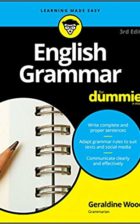Parentheses—which are often called brackets—are used to enclose additional information within a sentence or paragraph. There is only a handful of rules that you need to know when using them, but the main one is that they are always, always used in pairs. The same goes for square brackets, which we will also discuss.
To avoid any errors in your writing, here is how to use parentheses and brackets correctly:
1. Parentheses
1.1 Punctuating Parentheses
2. Square Brackets
2.1 Altering Quotes
2.2 Noting Errors
2.3 Brackets Inside Brackets
1. Parentheses
If you want to provide information that is supplemental to a sentence, you can enclose it in a pair of parentheses. This tells the reader that the bracketed information is not essential in understanding the main sentence.
Take a look at the following examples:
My siblings live in different cities: my sister lives in New York (where she works in fashion), and my brother lives in Boston.
In the Amazon rainforest (which covers land belonging to nine different nations), there are many deadly animals.
Stephen Hawking (one of the greatest minds of our time) passed away in 2018.
In each case, the information that is placed in parentheses is supplemental: it provides what the writer feels is relevant to know but which doesn’t fit in the main sentence.
You can think of the bracketed information like an interesting aside. If you take it away, the main sentence must still tell the reader everything that they need to know.
Let’s do that with the previous examples:
My siblings live in different cities: my sister lives in New York, and my brother lives in Boston.
In the Amazon rainforest, there are many deadly animals.
Stephen Hawking passed away in 2018.
Now all the parenthetical information is gone. But notice that each sentence still conveys its main point and can be read as a complete statement.
1.1 Punctuating Parentheses
If parentheses open directly after a period and enclose a full sentence, then place a period directly before the parentheses close.
Here’s an example to make this clear:
I sent a letter to my grandmother. (She doesn’t use email, so I had to post it to her.) It took almost three weeks to reach her house.
However, if the words inside the parentheses are not a full sentence, then the period is placed outside the parentheses, at whatever point the main sentence comes to an end:
I posted a letter to my grandmother (even though she has an email address). It took almost three weeks to reach her.
Fortunately (about five hours later), we made it back home.
Notice that you never place a comma directly before an opening parenthesis. If a comma is needed, it always goes after the closing parenthesis.
Avoid making comma mistakes like the ones below:
* Fortunately, (about five hours later) we made it back home.
* Fortunately, (about five hours later), we made it back home.
Since it’s worth repeating, the correct way to punctuate this sentence is like this:
Fortunately (about five hours later), we made it back home.
2. Square Brackets
Square brackets have more specialized uses than parentheses and are mostly used in academics and formal non-fiction. As a result, you will probably never see them in fiction or in writing aimed at the general public.
2.1 Altering Quotes
If a writer alters part of a quote, they must enclose that change in square brackets. This might be something they have added to the quote or changed within the original wording. This is best done in very small and subtle ways, either to help the quote read more smoothly in its new context or to clarify information that isn’t clear.
For example, let’s say that a Dr. Barkley wrote the following: “Most overweight people are reluctant to exercise or improve their diet.”
To quote Dr. Barkley, we could use part of his sentence like this:
According to Dr. Barkley, “[m]ost overweight people are reluctant to exercise,” and they are often unwilling to eat a healthier diet.
Here, square brackets are used to indicate that the capital “M” in the original sentence has been changed to a lower-case “m” in the quote. This was done to help the quote match the grammar of the current sentence.
Now let’s look at another example:
“Most overweight people [over thirty-five] are reluctant to exercise,” Dr. Barkley wrote in an article.
In this case, the square brackets show that we have added something to the quote. This was done to clarify the information. Now the reader knows that Dr. Barkley wasn’t talking about everybody but rather people over thirty-five.
2.2 Noting Errors
When the material you want to quote has a mistake in it, you can enclose the word “sic” in square brackets after the error. This tells readers that the mistake is part of the original text and wasn’t made by you:
“I went to Louissiana [sic] once as a child.”
In this quote, [sic] is used to show that the spelling of “Louisiana” was wrong in the original text and that the mistake has been preserved.
2.3 Brackets Inside Brackets
What do you do when a pair of brackets is used inside of another pair? The answer to this is very simple, but it varies according to style: either use square brackets for the inside pair, or simply use a second set of parentheses.
Their group (the Equal Rights Society [ERS]) is liberal.
Their group (the Equal Rights Society (ERS)) is liberal.
In the first example, square brackets are used for the inside pair. This is a popular choice because it keeps the information visibly clearer for the reader: you can see exactly how the different parts of the sentence are being bracketed.
However, many publishers are happy for a second pair of parentheses to be used instead, as we see in the second example. This is because it looks cleaner and probably won’t cause any confusion. The important thing is to be consistent: don’t mix and match these different styles.
For more help with your grammar, check out these fantastic books:








